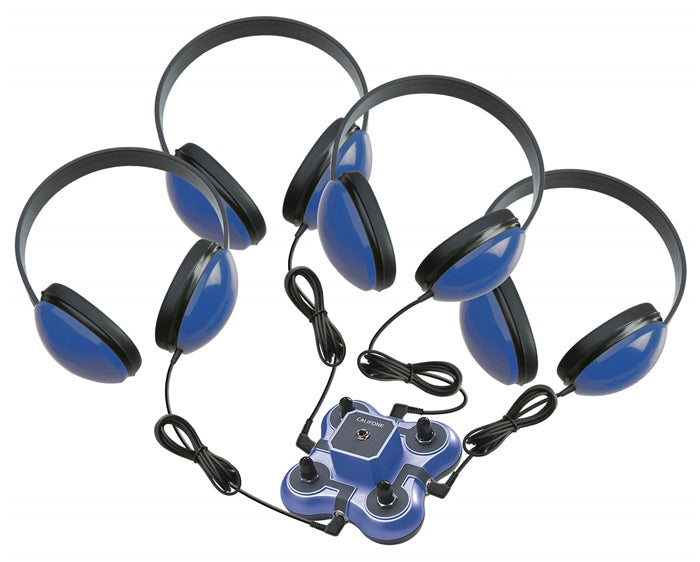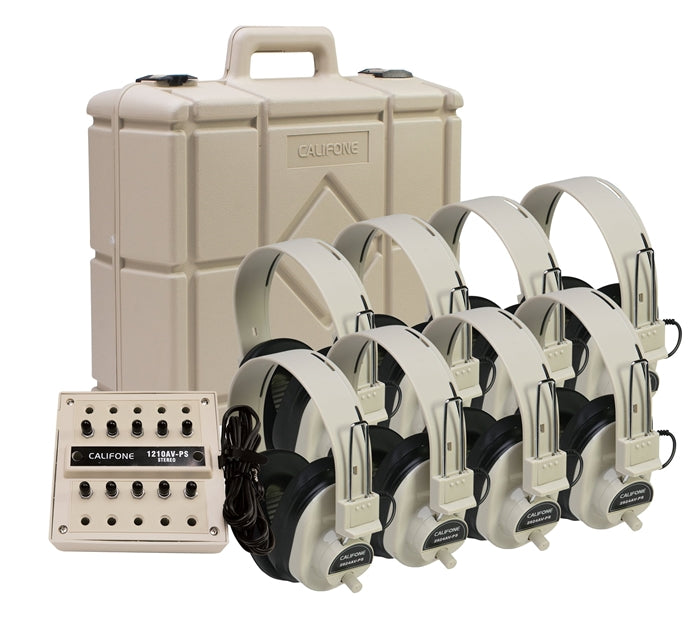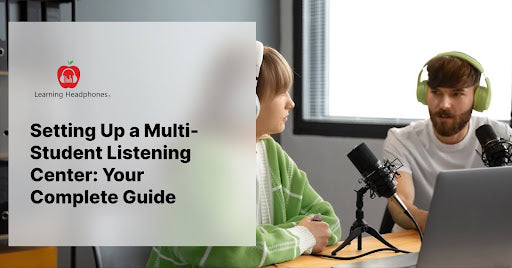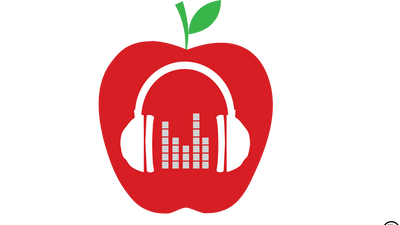Multi-student listening centers are tools for improving language and reading skills in classrooms. They let many students listen to audio at the same time, which is great for group learning. This guide will show you how to set up a good listening center and explain why they're useful.
Key Takeaways: Setting Up a Multi-Student Listening Center
- Choose strong, comfy headphones made for classrooms
- Pick audio players and jackboxes that can connect multiple headphones
- Make a quiet spot in the classroom for the listening center
- Choose audio that fits with what students are learning
- Make clear rules for using and taking care of the equipment
- Keep adding new audio to keep students interested
- Use the center for different kinds of learning activities
- Check how students are doing and change things if needed
- Take good care of the equipment so it lasts longer
- Use the center to help different types of learners
Understanding Multi-Student Listening Centers
A multi-student listening center usually has headphones, audio players, and jackboxes that let many students connect to one audio source. These centers give all students a chance to hear the same audio, which helps different types of learners. They're especially good for students who learn better by listening and those who might have trouble with regular reading.

Using listening centers in classrooms has many benefits:
Key Points: Active Listening in Education
- Active listening means focusing on understanding, not just hearing
- Over 60% of misunderstandings happen because of poor listening
- People usually only listen at 25% of their full ability
- Teaching active listening can make communication and language skills better
- It helps to limit distractions and use activities that involve multiple senses
- Active listening helps students remember information and follow lessons better
- It can make students less frustrated, anxious, and sad
- Active listening improves how students relate to others and understand feelings
- Teachers can show good listening by having regular class meetings
- Games like mindful listening and sound scavenger hunts can teach active listening
Essential Components of a Listening Center
Before setting up your listening center, it's important to know the main parts and what they do:
- Headphones: Choose strong, comfy headphones made for classrooms. Look for ones with adjustable bands, soft ear cups, and cords that don't tangle. Check out our classroom headphones to find the right ones for your students.
- Audio players: This could be a CD player, MP3 player, or even a computer or tablet. Think about what kind of audio you have and how easy it is for teachers and students to use.
- Jackboxes: These let you connect many headphones to one audio source. They usually fit 4 to 8 headphones each.
- Audio content: Educational CDs, audiobooks, or digital audio files. Have different kinds for different grades and subjects.
- Storage solutions: Good storage keeps everything organized and safe. Think about cases or carts made just for listening centers.


Step 1: Choosing the Right Equipment
When picking equipment for your listening center, think about these things:
- How many students will use it at once? This helps you know how many headphones and how big a jackbox you need.
- How strong are the headphones? Look for ones with tough cables, strong build, and good warranties.
- What kind of audio player works best (CD, MP3, or Bluetooth)? Think about what audio you already have and what you might use in the future.
- How will you store the equipment when it's not being used? Good storage keeps things organized and makes them last longer.
- How much money can you spend? It's often better to buy good quality stuff that lasts, even if it costs more at first.
- Will it work with the technology you already have in your classroom? Make sure everything can work together.
Our 6-person listening center with Bluetooth is a great choice because it's easy to use and works with both old and new audio types.
Step 2: Setting Up the Physical Space
Making a special listening area in your classroom is really important. Here's how to do it well:
- Pick a quiet corner of the classroom to avoid distractions. If you can, use bookshelves or dividers to make a semi-private space.
- Set up comfy seating for students, like cushions or small chairs. Make sure it's right for their age and helps them sit up straight while listening.
- Put a table or shelf for the audio player and jackbox. Make it easy for students to reach.
- Keep cords tidy to prevent tripping and damage. Use clips or covers to keep wires along walls or under carpets.
- Use a storage box or cart to keep equipment organized when not in use. This makes it easy to set up and put away.
- Make the space look nice with posters or art that encourages good listening and reading.
- Add a small whiteboard or bulletin board for instructions, schedules, or questions about the audio.
Step 3: Connecting the Equipment
Now it's time to connect everything:
- Put the audio player on the table or shelf. Make sure it's near a power outlet if needed.
- Connect the jackbox to the audio player with the right cable (usually a 3.5mm audio cable). Make sure it's plugged in securely.
- Plug the headphones into the jackbox. If you're using more than one jackbox, connect them in a line.
- Test everything by playing some audio and checking each set of headphones. Adjust the volume so it's comfortable for all the headphones.
- Label each headphone and its plug to make them easy to identify and prevent tangling.
- If you're using wireless headphones, make sure the transmitter is connected to the audio source and all the headphones are charged and working.
For bigger groups or more flexibility, think about our 12-station wireless listening center. It doesn't need complicated wiring and lets students move around more in the classroom.
Step 4: Organizing Audio Content
Having well-organized audio content is really important. Here are some tips:
- Make a list of all your audio materials, including titles, subjects, grade levels, and how long they are. You could use a spreadsheet or library software to make this easy to update and search.
- Label CDs or digital files clearly. You could use colors or symbols to show different subjects or reading levels.
- Store CDs in protective cases to keep them safe. Use CD wallets or boxes that protect them from scratches and dust.
- For digital files, make folders on your computer or tablet that are easy to navigate. Organize by subject, grade level, or what you're teaching.
- Keep adding new audio to keep students interested. You could subscribe to educational audio services to get new content regularly.
- Include different types of audio, like stories, non-fiction, poetry, and music, to match different interests and learning goals.
- Make playlists that go with what you're teaching in class.
- Let students suggest new audio content to keep them engaged with the listening center.
Step 5: Implementing Classroom Procedures
Make clear rules for using the listening center to keep it working well:
- Create a schedule for when different students use the listening center. You could make it part of your regular reading or center rotations.
- Teach students how to use and take care of the equipment. Show them how to put on headphones, change volume, and handle CDs or digital devices.
- Set rules for behavior while using the center, like speaking quietly and respecting others' listening time. Put these rules up near the listening area.
- Have a way for students to report problems with the equipment. This could be a simple log sheet or a student "tech helper" job.
- Clean and sanitize headphones regularly. Teach students to wipe down headphones after each use.
- If students can use audio materials on their own, set up a system for checking them out.
- Make a guide for fixing common problems, so students can solve small issues themselves.
- Decide what happens if students misuse equipment or don't follow the rules.
Maintenance and Troubleshooting
Taking care of your listening center regularly will keep it working well for longer:
- Check all connections weekly to make sure they're secure. Look for any damage on cables and plugs.
- Clean headphone ear cushions and audio player surfaces regularly. Pay extra attention to shared surfaces to prevent germs from spreading.
- Replace batteries in wireless devices as needed. Keep extra batteries on hand.
- Fix any sound quality issues quickly. This might mean adjusting settings, replacing cables, or getting equipment fixed.
- Do a deep clean of all equipment monthly, including sanitizing headphones and wiping down all surfaces.
- Have your school's IT department or a technician check everything once a year to make sure it's all working well.
- Keep spare parts like ear pads and audio cables for quick replacements when needed.
For easy maintenance and good sound quality, consider our deluxe USB MP3/CD/cassette listening center, which can play different types of audio and is built to last.
Enhancing Learning with Listening Centers
To get the most out of your multi-student listening center and use it well in your teaching:
- Match audio content with what you're teaching in class. Make listening guides or worksheets that connect the audio to lesson goals.
- Use the center for different types of instruction, providing content at various levels to help all learners.
- Include listening activities in reading stations or centers. Create follow-up tasks that improve understanding and thinking skills.
- Make activities or discussions based on the audio content. This could be writing prompts, group talks, or creative projects inspired by what students listened to.
- Keep track of student progress and change content or usage if needed. Use sheets or digital tools to record what materials students have finished and check their understanding.
- Encourage students to work together by assigning listening partners or small groups to discuss audio content.
- Use the listening center to help students learning English by providing audio in both their first language and English.
- Use technology like QR codes linked to digital audio files, so students can access content on tablets or smartphones.
- Teach listening comprehension strategies like taking notes, visualizing, or summarizing what they hear.
Conclusion
Setting up a multi-student listening center is a great way to help your students learn better. It can improve their language skills, reading understanding, and interest in learning. By carefully choosing equipment, organizing your space, and making clear rules, you can create a powerful tool for language and reading skills. Remember to take care of your equipment, add new audio content, and change your approach based on what your students need and tell you.
A well-used listening center helps different types of learners, makes it easier to teach different levels in one classroom, and gives students chances to learn on their own and in groups. As technology changes, try to keep up with new audio learning tools and methods to keep your listening center up-to-date and useful in your classroom.
For all your listening center needs, from headphones to complete setups, check out our listening center solutions. With the right equipment and approach, your multi-student listening center will become a valuable part of your classroom, helping students love reading, improve their language skills, and do better in all subjects.



